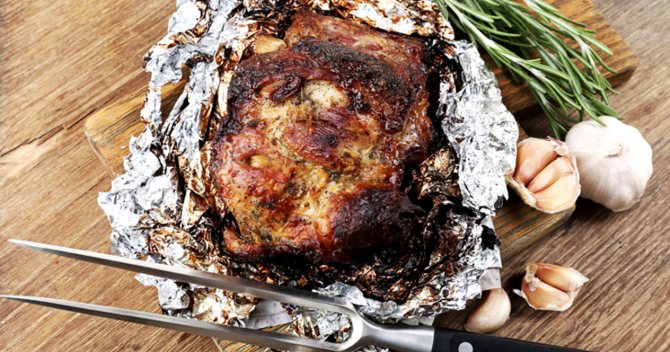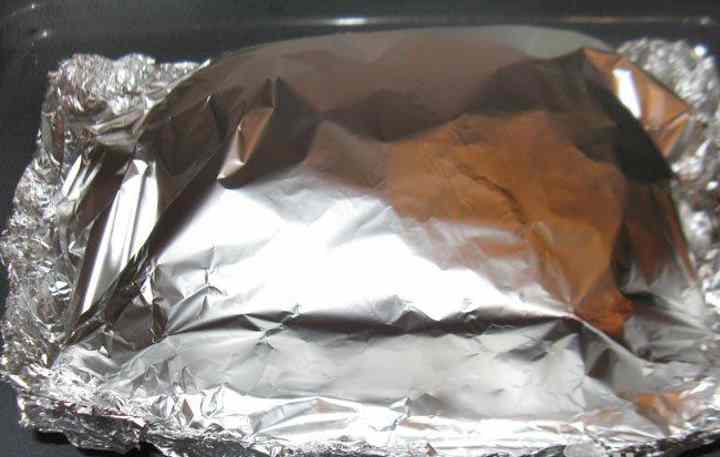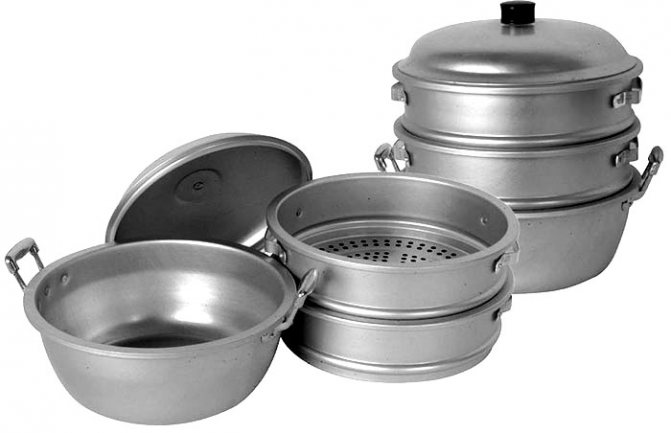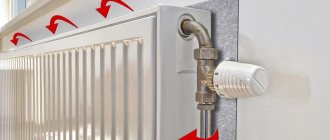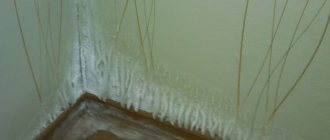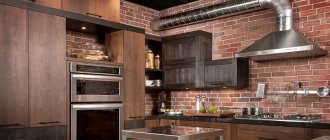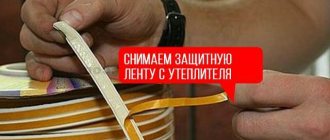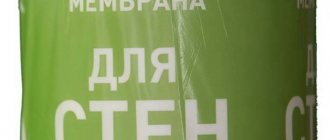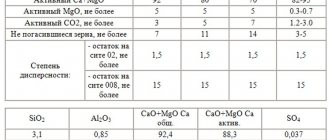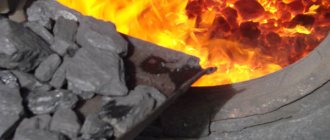What reflects the shiny surface of the foil
The explanation about reflection looks plausible: from the school physics course, we remember this property of shiny surfaces. But what do they reflect when cooking in the oven?
There are three ways to transfer heat: conduction, convection, and thermal radiation. When cooking in the oven, the last two are decisive, since neither the baking sheet nor the foil comes into direct contact with the heating elements.
Convection
In the oven, heat is transferred to the product from the heating elements through the movement of air. There is convection in any oven, not only in the one that has this word in its name. If we are talking about a convection oven, we mean a fan that moves the heated air faster.
A shiny (or matte) surface does not affect convection. The foil will heat up, no matter which side it comes into contact with the product, and transfer this heat.
More important here is how tightly the foil is wrapped around the contents. If air is left between the product and the aluminum sheet, it can become an insulating barrier and slow down the transfer of heat.
Heat radiation
Convection is most important in oven cooking, but radiation is responsible for some of the heat transfer. It is emitted by any object with a temperature above absolute zero (-273.15 ° C), that is, all elements of the oven and all of its contents.
For infrared radiation, the side of the foil will matter: the shiny surface reflects the rays, the matte surface catches. But this difference in heat transfer is only important for highly sensitive instruments. The side of the foil will have little effect on the speed of cooking dinner.
Manufacturers about reflective insulation
To discuss someone without their presence is beyond the bounds of decency, so we will not deprive our opponents of the word. By advertising their material, they support what has been said with theory and scientific facts. To begin with, a brief excursion into the world of the physical properties of infrared radiation.
Infrared rays are intermediate between visible light and microwave radiation. Any heated body emits infrared rays. These rays move at the speed of light and carry energy that can be reflected or absorbed by a body that meets in their path. The darker the body, the more IR rays it absorbs, and the more it heats up. But the path of the rays does not end there. The heated body itself begins to emit more intense infrared rays, which in turn will be absorbed or reflected by other bodies.
When we direct the thermal imager camera at a building, we see on the screen a picture of the intensity of infrared radiation emanating from a particular enclosing structure. The brighter (yellower) the light, the greater the heat loss in that area. Thus, the conclusion suggests itself: in order to reduce the heat loss of the building, it is necessary to reflect the heat inward. Doesn't it look like anything? That's right - a thermos. By the way, household thermoses with silver-plated flasks appeared more than a hundred years ago, and until recently no one thought that they could paint their home with silver and solve all the problems. But more on that later.
Which side of the foil should contact the food
Experts believe that in this matter you can completely rely on your taste, since there are no functional differences. Robert Wolke writes about this in his book What Einstein Told His Chef.To a similar conclusion Is There A Right And Wrong Side Of Aluminum Foil? Reynold's Kitchen experts came.
The question of which side to use the foil is important only for aluminum sheets with a non-stick coating. In this case, the manufacturer recommends placing the products on the matte side marked non-stick.
ON THE KITCHEN
1. To prevent the cake from burnt, and it does not stick to the walls and bottom, it is enough to cover the baking container with foil - thanks to its plasticity and crease, it is easy to give it any shape.
2. Great cake crust... Cover the edges of your homemade pie with strips of aluminum foil to prevent them from burning. The foil prevents the edges from browning before the whole cake is browned.
3. Original muffin cups... Make a teddy bear cupcake for your birthday, a heart for St. Valentine or any other shape as appropriate. To do this, it is enough to give a sheet of thick foil, folded in half, the desired outline and place it inside a large baking sheet.
4. Keeping rolls and breads warm... Do you want homemade buns or bread to be hot for lunch or a picnic? Wrap freshly baked items in a napkin and lay a layer of foil underneath before storing supplies in the basket. The foil reflects heat, so the bread stays warm for a long time.
5. Didn't have a pastry syringe at hand? It doesn't matter, roll a sheet of thick foil into a tube and fill with liquid icing. The advantage: no need to wash the syringe. When you're done, just throw away the foil.
6. When boiling eggs. If you wrap the eggs in foil before boiling, they won't burst. This is especially true when you are preparing for Easter.
7. You can also put the foil on the grill before you start cooking on it. The meat will be more juicy on this grill., due to the fact that the foil will not allow the juice to drain from the grates, and then you will hardly have to wash the grill.
8. Oven care. Do you often cook lasagne or casseroles that boil over and stain the bottom of the oven? To avoid this, place one or two sheets of foil on the trellis underneath. But do not place the foil on the bottom of the oven, as this may cause a fire.
9. Preservation of the quality of metal scourers... You are very annoyed that a metal sponge after the first active use, left at the sink, turns into a rusty ball the next day, only suitable for throwing away. To avoid rusting, wrap the washcloth in foil and place in the freezer.
10. Cleaning kitchen utensils... Don't have a hard sponge? Crumple up the foil and clean pots and pans with it.
11. Delicate cleaning of glassware... Using a ball rolled from foil, you can clean glass dishes in which food has burned from baking in the oven or microwave. It is not necessary to use foil from the packaging for such purposes, you can use already used foil. And before you throw it away, the foil will still serve you faithfully.
12. Foil is a great remedy. for sealing cans and bottles, it perfectly replaces caps and plugs.
Juicy dish

If you are planning to cook a juicy dish, for example, meat on the bone with vegetables, then you need to place the food on the glossy surface of "metal paper". In this case, a gentle heat treatment takes place, after which all the nutrients in your dish are almost completely preserved.
This method is great for cooking poultry with a whole carcass, large pieces of meat, lean fish. They will simmer in their own juice and bake evenly.
Vegetables are baked in the same way. It is better to wrap large specimens separately, and if it is a vegetable casserole or stew, then they are cooked in heat-resistant forms, which are covered from above with aluminum "paper" with a matte surface outward. It will absorb more heat this way and shorten the cooking time, while preserving the juiciness and flavor of the vegetables.
It should be noted that food practically does not stick to a glossy surface. This is important when cooking without oil. In this case, dry and low-fat foods are best placed on a gloss, so you will prepare a dietary low-calorie food.
Features of the installation of a foil heating system.
The ceiling is the best place for indoor installation.
The installation of the system provides for the placement of foil in the space formed by the ceiling covering and insulation. The place of its fixation is the ceiling lathing. This installation option allows heat to spread almost without loss to the entire area of the ceiling covering, and from there it reaches all parts of the room. It is the ceiling that provides heat to the entire room, from where it reaches the floor, walls, and also objects. Moreover, the return of heat to the air does not occur.
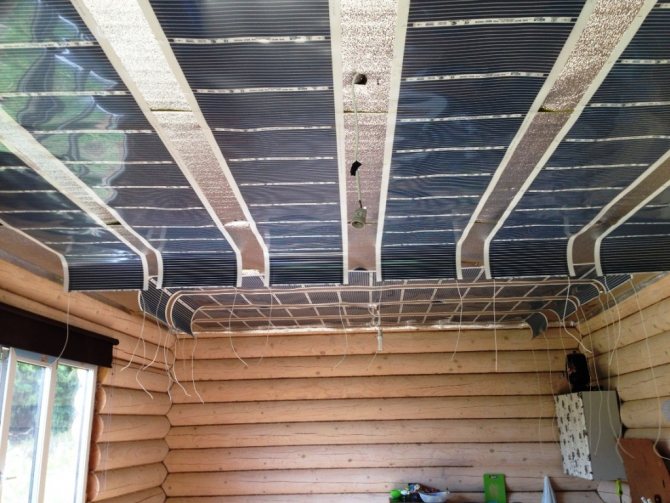

Manufacturers took into account the fact that ceilings in apartments may differ in height, which led to the appearance of two types of foil. The first is universal and can be used in any room, regardless of the characteristics of the ceiling, it is characterized by a power value of 125 W / m. As for the second, it is designed for rooms with high ceilings, it is characterized by a power value of 150 W / m.
In order for a comfortable temperature to prevail in the house, this system is equipped with a thermostat, which provides data on the temperature at a particular point in time in the room.
Gender - as an alternative to placement
A feature of this system is that the floor itself can serve as a place for placing the foil. In this case, it is laid between the flooring and the insulation. It should be noted that there must be a gap between the surface and the foil. Heating here is carried out in the same way as when using the ceiling version of the system: as a result of an increase in temperature, the foil heats the coating, which spreads heat to the walls, ceiling and furniture. The same heat up the air in the room.
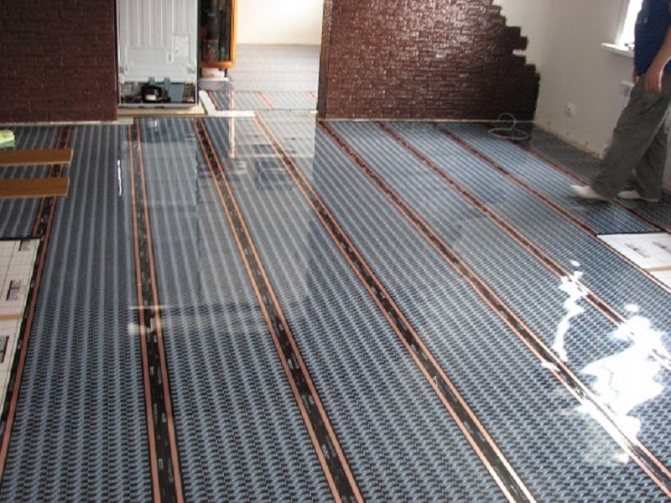

In a situation where only the floor is used for space heating, foil with a power dissipation of 90 W / m should be used. You can ensure a comfortable floor temperature with foil, for which the power dissipation is 60 W / m.
The main advantages of a heating system with foil
Among all the advantages characteristic of a warm ceiling system, the main one should be called insignificant electricity costs. This is possible thanks to the high heating efficiency demonstrated by infrared radiation in combination with a room heating control system.
In addition to this, it is distinguished by absolute fire safety, as well as low costs and minimum time required for installation, which eliminates the need to install expensive heating mains or gas pipelines.
The foil-based heating system makes it possible to change the heating temperature of the room without any special difficulties and very quickly.


This heating system makes it possible to use it not only indoors, but also outdoors, heating those items that you need. For example, put a warm bench on the open terrace and enjoy the views during the cool part of the day. Foil to help you!
Vacuum packaging
Oxygen is the "main enemy" of fresh food. They oxidize in air, and most bacteria cannot live in an airless space. Therefore, after removing air from the package, food will remain fresh, if not forever, then for a long time. Vacuum containers are made of glass or plastic. You put food in a package and use a special pump to pump out the air. There are two types of pumps - mechanical and electrical. The former are cheaper. But you have to pump out the air by hand and it is unlikely that you will be able to create a completely airless space. The latter are more expensive, operate on mains or battery power, and provide sufficient rarefaction of the air.At the bottom of each container there is a special grid that prevents the products from coming into contact with the moisture they release. Expensive trays have a date and month indicator on the lids so that you don't forget when you put food in the tray.
What to store: cuts, ready meals, fresh meat and fish, sausages, semi-finished products, cheese.
Not suitable for: vegetables, fruits and herbs.
Does aluminum foil harm our health and the environment?
how the rule, foil there is on the any kitchen: at her can bake meat and vegetables, at her conveniently wrap food "on the takeaway ", sometimes her useThey are used instead of containers for storing food in the refrigerator. But is foil so harmless for health and the environment?
Time-tested material, it turns out, is not as harmless as we used to think. The foil is almost 99% aluminum. This metal can accumulate in the lungs, kidneys, thyroid gland and brain, provoking the development of all kinds of diseases.
In addition, it slows down the growth and development of cells, negatively affects the nervous system, according to some data, it contributes to the appearance of malignant tumors. It often enters our body through food.


True, in order for the foil to begin to release aluminum, which is absorbed into food, it is necessary that it be heated.
So if you just wrap sandwiches in this packaging material to take with you to lunch, it won't do much harm. But it is worth turning out to be from a delicious chicken baked in foil with vegetables - it is under the influence of high temperatures that aluminum enters the food, and then into the human body. Better to replace it with parchment or a baking sleeve.
To assess the environmental impact of foil, German experts from the German Institute for Energy and the Environment (IFEU) published a study comparing the environmental impact of using aluminum foil and plastic food containers.
In the main scenario, the environmental impact of household aluminum foil, including all stages of its production, was compared to the impact of washing reusable plastic containers in an energy efficient dishwasher.
“From an environmental point of view, aluminum foil is as good as the plastic containers we compared with. The environmental impact of household aluminum foil is lower in the major impact categories than that of plastic containers, and is at the same level in the remaining categories.
Therefore, using the appropriate amount of aluminum foil to pack one or two sandwiches in the European market (EU27 + 2) should be considered environmentally responsible behavior, ”said IFEU project manager Frank Wellenreuter.


In addition, foil is accepted for processing as recyclable materials. Aluminum can be recycled many times without compromising its quality.
For example, according to the US Aluminum Association, about 75% of all aluminum produced in this country is used, recycled over and over again. This saves both primary raw materials and additional resources - recycling aluminum requires about 95% less energy than producing primary aluminum.
But there is one "but" - only clean foil is accepted for processing, which after use in the kitchen does not remain so much. Therefore, if you remain committed to this material and at the same time want to reduce your ecological footprint, it is worth washing the foil after cooking and then handing it over for recycling.
The average price for receiving aluminum in Moscow is 85 rubles per kilogram, but some companies accept raw materials for 98-100 rubles, depending on the degree of contamination and the quality of the foil.
Subscribe to our Telegram channel! t.me/recyclemagru
Bags and films
Plastic bag - a good container for most products. However, the package is not the same. Plastic bags in which non-food items are packed are not intended for storing food. Therefore, it is best to leave the food in the package in which you brought it from the store. There, all packages are intended for food products. A good alternative to the bag is cling film. True, after you once unrolled the piece wrapped in a film, you will have to throw it away and unwind a new piece of cellophane.
What to store: vegetables, fruits, cheese, smoked meats, meat, fish.
Not suitable for: storing sausages, butter and other fatty foods. In cellophane packaging, they quickly become slippery and become covered with an unpleasant white coating.
Which side should I put the baking foil on?
It is considered that there is no difference and the quality of the baked dish will remain the samewhichever side you put the sheet of metal "paper". There are some differences in temperature conditions:
- The shiny surface retains heat better;
- Matte attracts him better.
Thus, it turns out that it is better to put a glossy surface insideso that the food is baked well and matte outward. In addition, there are a few more nuances:
- Food burns less on the glossy side;
- When heated, the matte surface reacts with the food and the taste may change. But you most likely will not notice these changes, they are so small.
It is also rumored that the shiny side gives off harmful substances and they end up in food. Indeed, aluminum is a toxic metal and can cause severe harm to the body.
Studies have shown that the content of its particles in chicken after baking in foil increases by 200%. But it has also been proven that the human body is able to quickly get rid of these toxic compounds. And even the norm was set - 40 μg of aluminum per kilogram of body weight per day can enter the body and not have time to harm.
For a person with average parameters (weighing 75 kg), this is approximately 3 mg per day. But this question is considered open and disputes on this topic do not subside today.


The invention of aluminum foil
The title of the most remarkable and practical was awarded to the well-known aluminum foil. It is used in a wide variety of industries: high-precision engineering, pharmaceuticals, construction, electrical engineering, chemical and food industries. Foil by purpose is divided into household and technical.
This unique material, without which modern life is inconceivable, has existed for a little over a hundred years. Foil was originally used in the confectionery industry for packaging chocolate products. Before that, manufacturers could only sell chocolate in loose pieces. After the invention of foil, new horizons opened up for chocolate businessmen. In a shiny wrapper, chocolate retained its taste for a long time, did not stain customers' bags, did not melt in their hands.
Later, foil began to be used in the packaging of juices, tobacco products, dairy products, tablets and many other goods. Cooks and housewives also learned about its amazing qualities and to this day they are happy to use it for grilling, in coals or in the oven.
Simple and tasty: recipes for baking in foil
To please, and sometimes surprise, your guests, you don't have to be a culinary guru. Use simple recipes and be sure your loved ones will appreciate them.
Pork
Sprinkle a piece of pork (about 1.5 kg) with garlic and then rub with a mixture of salt and pepper. Wrap in foil and refrigerate for several hours.
Preheat the oven to 200 degrees and put the meat there.Cook for at least 1 hour. Then remove from the oven, cut the foil, and wrap the edges so that the top is open. Place in the oven again for 20 minutes.
A mixture of mustard and mayonnaise can be used instead of salt and pepper.
Fish
Fish is prepared in much the same way. Only garlic is excluded, and a mixture of lemon juice and vegetable oil (olive or sunflower) is used as a marinade.
And the cooking time will take much less - about 30 minutes.
Fish should not be packed too tightly.
Chicken
And again, nothing new: rub the carcass with garlic and a mixture of salt and pepper. By the way, someone prefers to marinate in soy sauce.
The baking time is slightly shorter than for pork and slightly longer than for fish - 35-40 minutes. 10-15 minutes before the end of frying, open the foil and let the chicken brown.
Meat, chicken or fish, wrapped in foil, are soaked in their own juice and slowly baked in the oven.
You've probably noticed that preparing each dish requires a minimum of effort and skill. It's all about the peculiarities of the marinade and the use of a metal film. Obviously, the correct use of foil will help make the cooking process fun and the result amazing.
Observing all of the above simple subtleties, you can prepare many delicious and incredibly aromatic dishes.
Foil manufacturing technology
In the first step, molten aluminum is passed through a roll to produce an aluminum tape that is approximately 1 centimeter thick; At the second stage, the obtained aluminum tape is repeatedly passed through rotating shafts (until the thickness of the tape reaches the required values). The third step is to pass an aluminum strip of the required thickness through the last rolls. At low thickness, the foil becomes softer, and to avoid damage, two aluminum strips are passed through the rollers at the same time. In this case, the outer layer of both surfaces is polished by touching the shafts, while the inner surfaces remain matt.
The final stage consists of the process of unwinding the finished tapes and subsequent cutting to the specified standard sizes. Based on the foil manufacturing technology, it can be concluded that there are no differences in the component composition of the two sides of the foil. Therefore, the use of matte and glossy sides is equally acceptable for both indoor and outdoor use.
When to pierce
How to properly lay the foil on a baking sheet, which side, we found out, the question remains whether it is necessary to pierce it and when it should be done. To begin with, some housewives make small holes so that air can enter the product, a crust is obtained.
You don't need to do them at the very beginning, so you only get a negative result:
- the dish becomes drier;
- some of the useful properties disappear;
- you have to use oil so that the food does not burn;
- juice and fat flow out onto the baking sheet
When the product is completely isolated, it becomes similar to boiled one, especially if you are cooking meat with a lot of juice. To avoid this problem and get a nice crispy crust, open the edges of the foil a few minutes before turning off the oven. The holes must be made from above, while it is desirable to reduce the gas. If the oven has a top heating element, turn it on. Leave your masterpiece to bake in such conditions for 10-15 minutes.
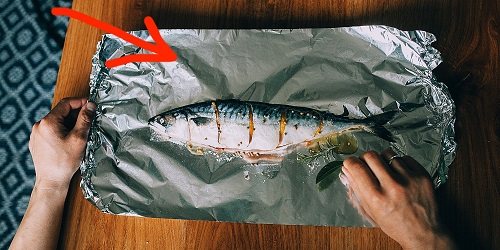

Matte side
